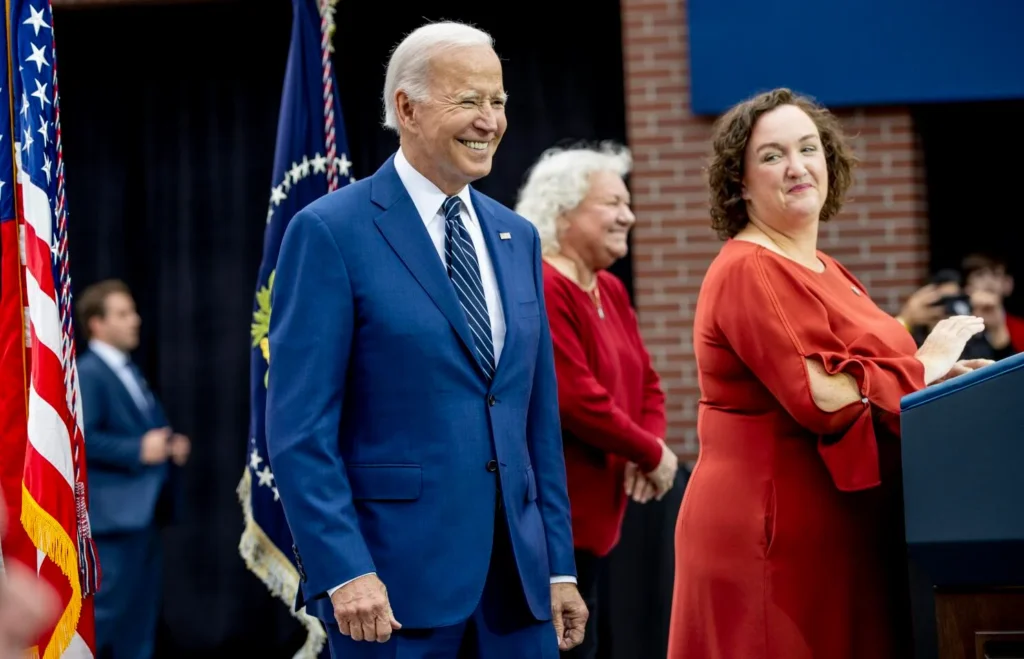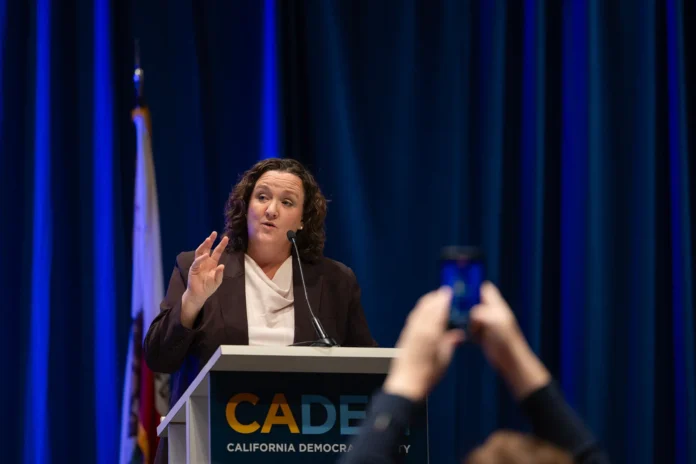Katie Porter Joins California’s 2026 Governor’s Race—What’s at Stake?
Former Democratic Representative Katie Porter has officially announced her bid for California’s 2026 gubernatorial election. Known for her viral congressional interrogations and relentless consumer advocacy, Porter aims to succeed Governor Gavin Newsom. However, the political landscape remains fluid, particularly if former Vice President Kamala Harris enters the race.
The Candidates and Potential Challenges
Porter joins a growing field of Democratic contenders, including former Los Angeles Mayor Antonio Villaraigosa and Lieutenant Governor Eleni Kounalakis. On the Republican side, Riverside County Sheriff Chad Bianco has already declared his candidacy, emphasizing California’s ongoing challenges such as homelessness and housing affordability.
Political analysts note that Harris’s potential entry could significantly reshape the race. Given her stature within the Democratic Party, she would likely dissuade many potential challengers. Porter’s advisers have suggested that should Harris run, Porter would be among those stepping aside. Harris, who previously served as California’s attorney general before becoming a senator and later vice president, maintains significant name recognition and political influence in the state.

Porter’s Campaign Strategy
Porter’s campaign centers on resisting Trump-era policies that she believes harm Californians. “I won’t ever back down when Trump’s hurting Californians,” she asserted in her campaign announcement. Her focus remains on challenging corporate influence, particularly in industries like oil, banking, and pharmaceuticals. Her tenure in Congress was marked by a strong push for consumer protections, financial oversight, and economic justice. These themes are expected to play a central role in her gubernatorial campaign.
In addition to her anti-corporate stance, Porter is likely to focus on key state issues such as climate policy, education reform, and healthcare access. She has voiced concerns about the rising cost of living in California, advocating for policies that would ease financial burdens on working families. Moreover, her commitment to environmental policies aligns with California’s aggressive climate goals, which include reducing carbon emissions and transitioning to renewable energy sources.
Political Landscape and Open Primary Implications
California’s open primary system adds an element of unpredictability to the race. All candidates appear on a single ballot regardless of party affiliation, with the top two vote-getters advancing to the general election. This system has previously led to unexpected outcomes, as seen in past elections where two Democrats advanced to the general election, excluding Republicans altogether.
Analysts suggest that a well-funded outsider or a Trump-aligned Republican could disrupt conventional expectations. The Republican field remains uncertain, but given the state’s strong Democratic lean, GOP candidates will need to secure broad appeal to make it past the primary stage. A high-profile conservative candidate or an independent with significant financial backing could introduce further competition.
Broader Implications for the Democratic Party
The outcome of this race will have significant implications for the Democratic Party both within California and on a national scale. Should Harris enter the race and win, it could signal a continued influence of former Biden administration officials within state politics. On the other hand, a victory for Porter or another progressive candidate might reinforce the growing strength of the party’s left wing.

California has long been a bellwether for national Democratic trends, and the next governor will play a crucial role in shaping the state’s policies on climate action, immigration, and social justice. The results of this election could influence national political narratives, particularly regarding Democratic strategies leading into the next presidential election cycle.
Key Takeaways
- Katie Porter’s Platform: Anti-corporate, consumer advocacy, progressive policies.
- Potential Harris Entry: Could deter major Democratic challengers, shifting the race’s trajectory.
- Republican Opposition: Sheriff Chad Bianco has entered, with more GOP candidates likely to follow.
- Unpredictable Primary System: The open format could produce surprising results.
- Impact on National Politics: The outcome could shape Democratic strategies at both the state and national levels.
What’s Next?
With over a year until the election, California’s governor’s race remains fluid. If Harris announces her candidacy, Porter and other Democrats may reconsider their strategies. Meanwhile, the Republican field remains in flux, and external factors—such as economic conditions, political controversies, and national party dynamics—could further impact the race.
For now, Porter’s campaign highlights a progressive stance against Trump-era policies and corporate influence, positioning her as a formidable contender in the Democratic-leaning state. Whether she remains in the race or steps aside for Harris, her political influence is expected to shape the broader conversation around California’s future governance.
Stay tuned for more updates on California’s 2026 gubernatorial race as new developments unfold.


